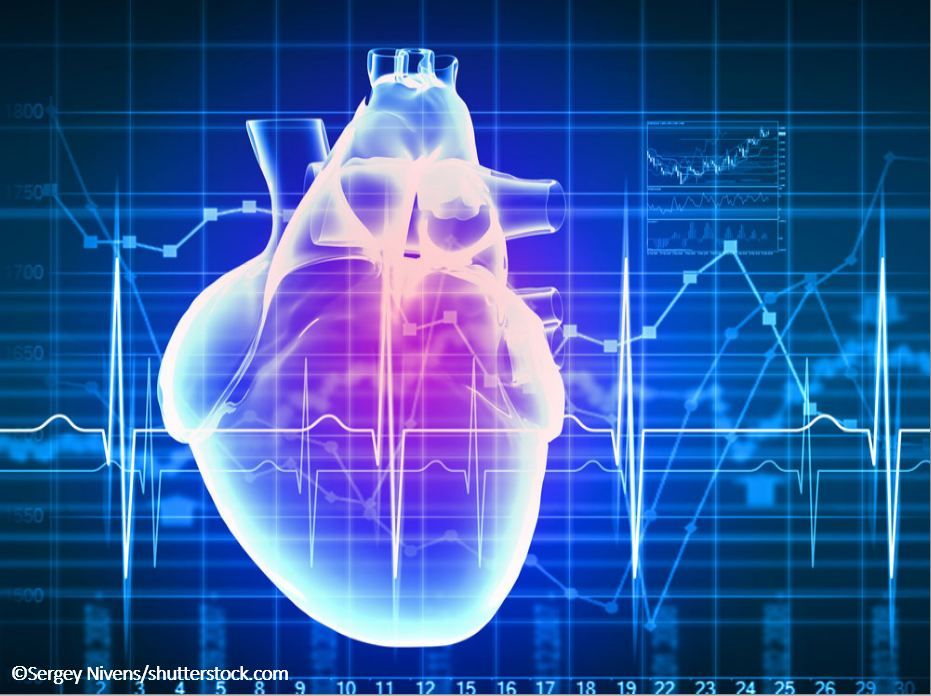Who’s at Risk for Cardiac Involvement in SLE?
Canadian researchers have identified predictors of subclinical cardiomyopathy in patients with lupus.
Image: ©Sergey Nivens/Shutterstock.com

Cardiac involvement is often underdiagnosed in systemic lupus erythematosus (SLE). Elevated levels of cardiac biomarkers may help predict which patients are at risk for antimalarial-induced cardiomyopathy (AMIC), according to the results of a recent study by Canadian investigators.1
Antimalarials in SLE
The European League Against Rheumatism (EULAR) recommends antimalarials in patients with SLE who do not have major organ involvement.2 Antimalarials help reduce flares, decrease the risk of thrombosis, and increase survival. The main adverse effect of these agents is retinal damage. In addition, isolated cases of AMIC, linked to duration of use and cumulative dose, have been reported.
Research suggests that almost 70% of patients with SLE may be taking antimalarials.3 With so many patients receiving these drugs, is AMIC underrecognized? To answer this question, researchers at the University of Toronto looked at cardiac biomarkers in patients with SLE.
Study of cardiac biomarkers in AMIC
The participants included 151 patients with SLE who were seen at the University of Toronto from March to May 2016.1 They had no history of heart disease or pulmonary arterial hypertension (PAH) and no evidence of acute coronary syndrome.
Brain natriuretic peptide (BNP) and cardiac troponin I were measured, and a cross-sectional evaluation was performed. Elevated BNP pointed to volume/pressure overload, abnormal high sensitivity cardiac troponin I indicated myocardial necrosis, and an abnormal creatine phosphokinase (CPK) was defined as 3 or more abnormal measurements over the past 2 years without active myositis. Sixteen patients with abnormal biomarkers were followed for 12 months to determine the specific cause.
Please click below for the clinical implications of the study.
Prolonged antimalarial use, elevated CPK predict AMIC
Overall, 10.6% of patients in the study had elevated BNP, and 5.9% had abnormal cardiac troponin I. Predictors of elevated cardiac biomarkers were prolonged (more than 5.6 years’ duration) antimalarial treatment (odds ratio [OR], 5.4; P = .0337) and persistent CPK elevation (OR, 4.6; P = .02). Of the 16 patients with abnormal biomarkers who were followed for 12 months, 6 had definite or possible AMIC, of whom 3 had asymptomatic cases.
Clinical implications
Length of therapy is the main predictor of AMIC. The majority of patients with SLE receive long-term antimalarials and should be considered at risk for AMIC.
AMIC has clinical features similar to those of heart failure and carries a poor prognosis: about 45% mortality.4 Expensive and invasive studies are not justified in asymptomatic patients; however, persistently elevated CPK, abnormal BNP, and abnormal cardiac troponin I may help identify subclinical AMIC and stratify patients at high risk for it
Take-home points
• A study among patients with SLE without evidence of cardiac involvement showed 10.6% had elevated BNP and 5.9% had abnormal cardiac troponin.
• Prolonged antimalarial therapy and persistent CPK elevation predicted elevated cardiac biomarkers.
• Of 16 patients with abnormal cardiac biomarkers, over 30% had confirmed/possible AMIC, which was asymptomatic in 50% of cases.
• Persistently elevated CPK, abnormal BNP and abnormal cardiac troponin I may help identify subclinical AMIC and stratify patients at high risk.
References:
1. Tselios K, Gladman DD, Harvey P, et al. Abnormal cardiac biomarkers in patients with systemic lupus erythematosus and no prior heart disease: a consequence of antimalarials? J Rheumatol. 2018 Aug 1. pii: jrheum.171436. doi: 10.3899/jrheum.171436.
2. Bertsias G, Ioannidis JP, Boletis J, et al. EULAR recommendations for the management of systemic lupus erythematosus. Report of a Task Force of the EULAR Standing Committee for International Clinical Studies Including Therapeutics. Ann Rheum Dis. 2008;67:195-205.
3. Bruce IN, O’Keeffe AG, Farewell V, et al. Factors associated with damage accrual in patients with systemic lupus erythematosus: results from the Systemic Lupus International Collaborating Clinics (SLICC) Inception Cohort. Ann Rheum Dis. 2015;74:1706-1713. doi: 10.1136/annrheumdis-2013-205171. Epub 2014 May 16.
4. Tselios K, Deeb M, Gladman DD, et al. Antimalarial-induced cardiomyopathy: a systematic review of the literature. Lupus. 2018;27:591-599. doi: 10.1177/0961203317734922.